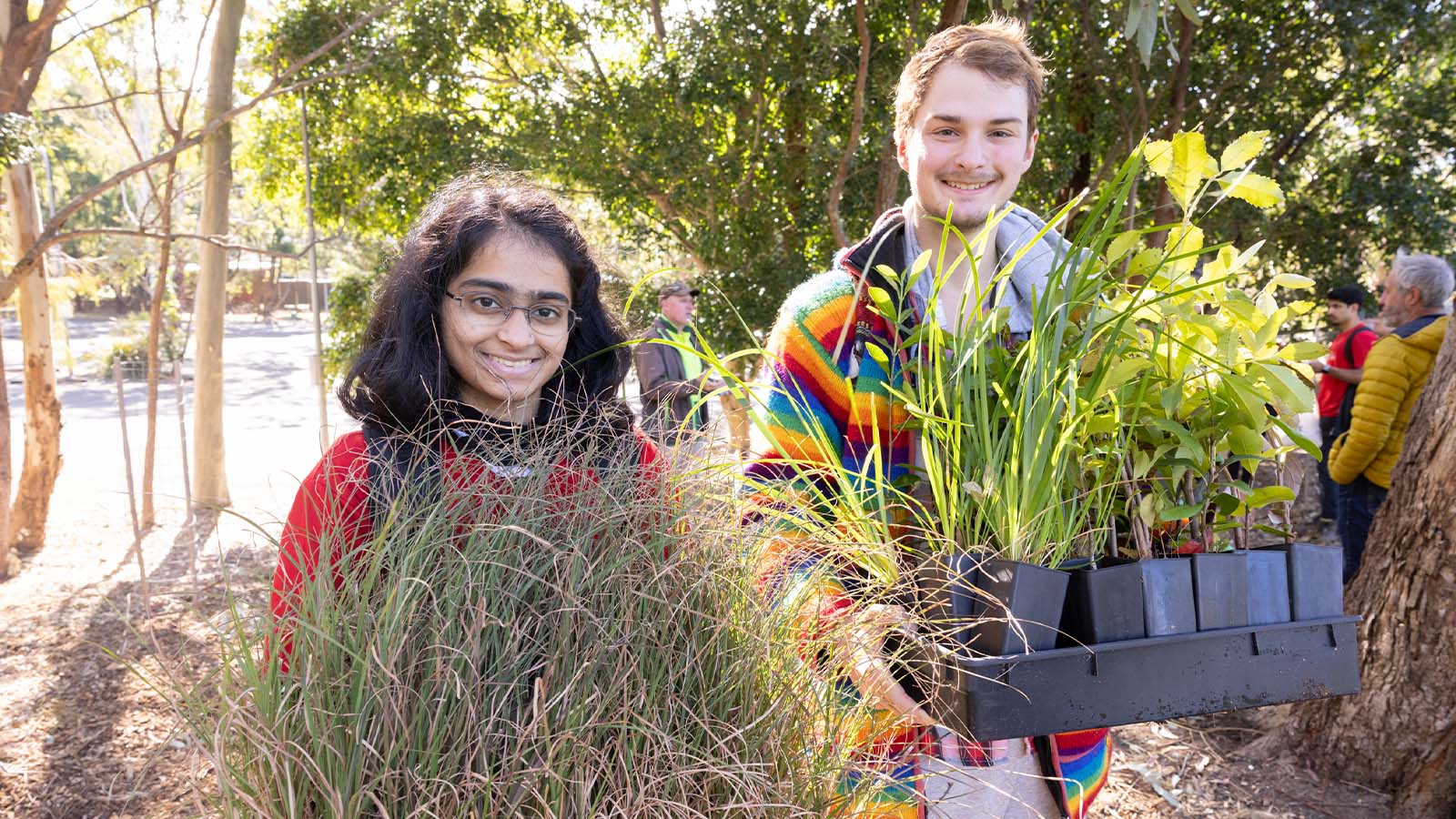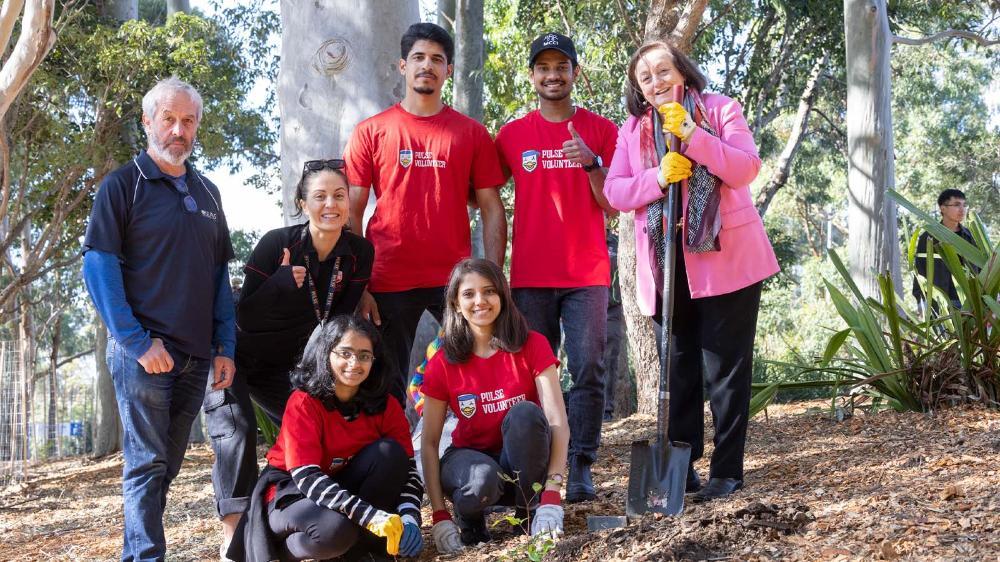July 28, 2023
UOW celebrates National Tree Day
UOW volunteers will have planted more than 10,660 trees by the end of September
Did you know that a single tree can absorb 800 kilograms of carbon dioxide over its lifetime? This process, known as photosynthesis, helps mitigate climate change’s effects by reducing the concentration of greenhouse gases in the air. Trees also act as carbon sinks, storing carbon in their trunks, branches and leaves.
Apart from helping the environment, trees have numerous benefits for people’s health. They provide shade and reduce the temperature, making the environment more comfortable. They also reduce air pollution by absorbing harmful gases such as nitrogen oxides, sulphur dioxide and ozone.
On Friday 28 July, the University of Wollongong’s (UOW) students and staff met at the Wollongong campus to celebrate National Tree Day by planting 50 native trees and 200 types of grasses, from Ficus coronate, commonly known as the Sandpaper Fig and Acronychia oblongifolia, or the Scented Acronychia to Diploglottis australis, called the Native Tamarind or Plum Pine.
Among the enthusiastic participants was UOW Vice-Chancellor and President Professor Patricia M. Davidson who personally planted her own tree - Guioa semiglauca - during the event. Professor Davidson emphasised the crucial role that universities play in fostering environmental stewardship.
“Today's gathering highlights the profound impact we can achieve when we come together as a community, nurturing our surroundings and safeguarding the natural treasures of our beautiful ecosystem. I am grateful to the student and staff volunteers who commit their time to do this,” Professor Davidson said.

The tree planting initiative started as a series of local events in 2022 and was the master plan of Associate Professor Owen Price, Director at the Centre for Environmental Risk Management of Bushfire at the School of Earth, Atmosphere and Life Science. Associate Professor Price thought planting trees would be a great way to combat the loss of tree population after the Black Summer of 2019 while engaging the local community in an activity that promotes environmental stewardship and helps protect the Illawarra ecosystem.
“By the end of September, UOW volunteers will have managed to plant as many as 10,660 trees in various regions of the Illawarra and Shoalhaven, and we’re already planning more tree planting for next year. It’s great for the environment and fantastic for our staff and student community,” Professor Price said.
Since the 1970s, the UOW campus has been landscaped with various Indigenous trees and shrubs thanks to the UOW Landscape Master Plan, completed in 1979 and overseen by Landscape Supervisors Leon Fuller and Bruce McKenzie. The policy of planting Australian native species has been maintained by subsequent landscape staff. UOW’s Wollongong Campus forms part of the Keira Green Corridor, linking the vegetation of the escarpment to that of the coastal region.
“UOW and its campuses are famous for impressive native trees. They benefit our health, wellbeing and our environment immensely,” Associate Professor Price said.
According to UOW graduate and ecologist Nicholas Agostino, when UOW started in the 1970s, it was an almost bare paddock. Now, it has 3888 tagged trees and another 3990 untagged ones. Mr Agostino calculated that since planting began in the 70s, the trees on the Wollongong Campus have stored 15,000 tons of CO2, with the largest single tree capturing 98 tons of CO2.
In the bushfires of 2019-2020, around 5.8 million hectares of broadleaf forest were burned in New South Wales and Victoria, which accounts for roughly 21 per cent of the nation’s forested area. Trees also face other threats, such as deforestation and urbanisation.
